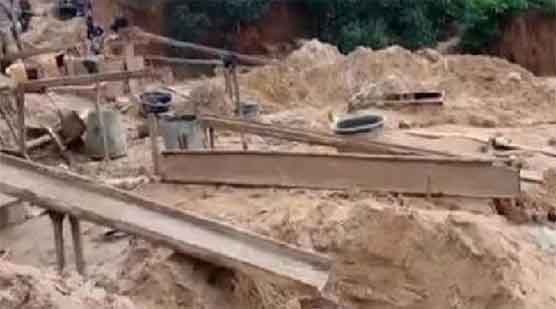
A illegal gold mine in Ghana’s Ashanti Region collapsed, killing 7 and injuring 5. The "galamsey" disaster spotlights long-standing risks of unregulated mining despite government crackdowns.
Heartbreak has hit Ghana’s Ashanti Region after a poorly regulated gold mine pit collapsed on October 1, trapping dozens of miners underground. As rescue teams wrap up search efforts, officials have confirmed 7 deaths and 5 critical injuries—another devastating reminder of the dangers of “galamsey,” the local term for illegal mining that plagues the West African nation.
The Tragedy Unfolds: Nighttime Collapse and Race to Rescue
The disaster struck around 6 p.m. local time at Kaso Tie, a small community in the Atwima Mponua District, when the earthen walls of the unlicensed gold pit gave way without warning. Miners, who often work late into the evening chasing small gold deposits, were caught off guard.
“It happened so fast—one minute we were digging, the next everything went dark,” a survivor told local reporters from his hospital bed. Ghana’s National Disaster Management Organization launched an overnight rescue, pulling 5 injured miners from the rubble, but hopes of finding more survivors faded by dawn. Social media lit up with #PrayForKasoTie as Ghanaians shared condolences and anger over the loss.
“Galamsey”: The Persistent Crisis Behind the Collapse
This isn’t an isolated incident—it’s a symptom of a crisis. Ghana, one of Africa’s top gold producers, has battled “galamsey” for decades. Miners, often driven by poverty, dig unstructured pits without safety gear, support beams, or emergency plans. It’s a deadly gamble, and the odds caught up with Kaso Tie.
The government has tried cracking down—even arresting military personnel accused of extorting money to look the other way—but the trade persists. “Galamsey is like a wildfire,” a mining policy expert explained. “You put out one spot, and it pops up somewhere else because people need to eat.” For many in rural Ghana, illegal mining pays far more than local farming, making regulation feel like punishment, not protection.
Reaction: Anger, Sorrow, and Calls for Action
The tragedy has sparked fury online and offline. On Twitter, Ghanaians are slamming officials for “empty promises” to fix mining safety. One viral post read: “We don’t need more press conferences—we need mines that won’t kill our brothers.” International aid groups echoed the frustration, noting that legal mines in Ghana have strict safety rules, but enforcement crumbles in remote areas.
Local leaders are demanding change, too. “This isn’t just bad luck—it’s negligence,” the Atwima Mponua District chief said. “We’ve begged for more inspections, more support for alternative jobs, but nothing comes.” The 5 survivors, meanwhile, face long recoveries—both physical and emotional—after their brush with death.
What’s Next? Breaking the Cycle of “Galamsey” Deaths
For now, the focus is on supporting the victims’ families, but the hard work of prevention looms. Experts say crackdowns alone won’t work—Ghana needs to pair enforcement with economic alternatives, like training programs for young people, to make illegal mining less appealing.
It’s a tall order, but one that can’t wait. Every “galamsey” pit is a ticking time bomb, and Kaso Tie’s tragedy is a warning. As one Ghanaian journalist put it: “We can’t keep burying our people and calling it ‘the cost of gold.’” Until real change comes, more communities will fear the earth beneath their feet.
The Kaso Tie collapse isn’t just a local story—it’s a global one, tying poverty, resource extraction, and governance into a deadly knot. For the families of the 7 dead, that knot has left a hole no gold can fill. And for Ghana, it’s a reminder that progress can’t come at the cost of human life.
